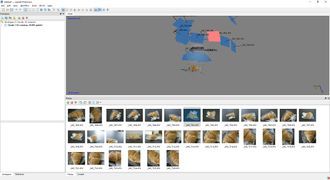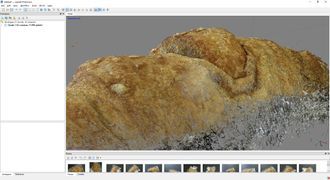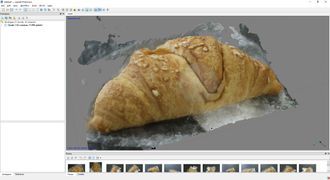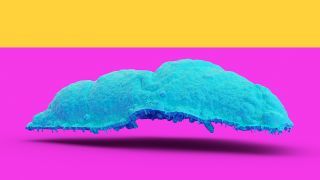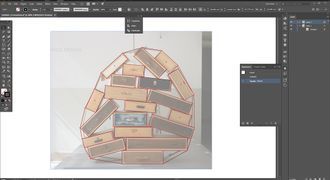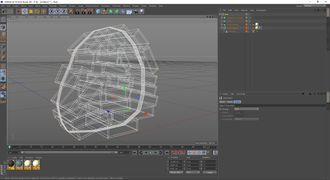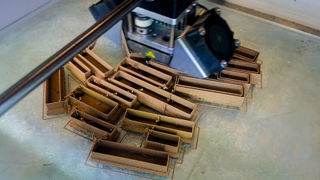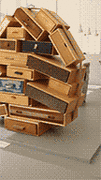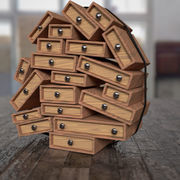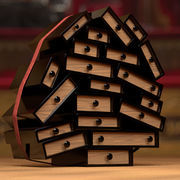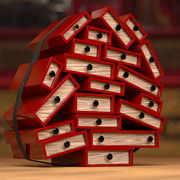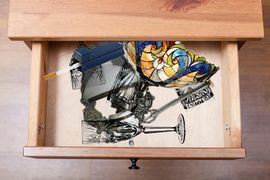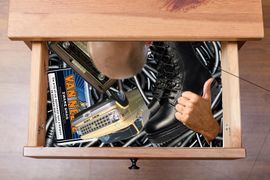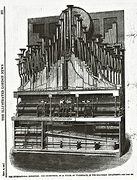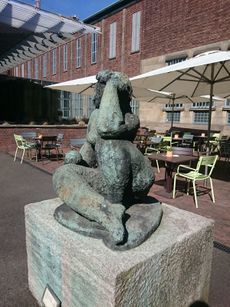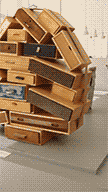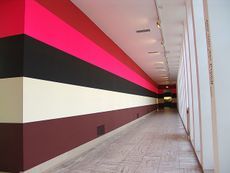User:Fuutsie
Contents
The unextraordinary research and process of Rik Wijngaards
| =Appropriation, the early research= |
Appropriation, the early researchThe quickest explanation is repurposing an object/artpiece as is to give it another function or meaning. This can be as simple as turning a table upside down, but can also exist in the way of Pablo Picasso’s “Guitar, Sheet music and Wine glass, where existing pieces come together to form a new work. This way a NEW object is created.
Appropriation also has a bad aftertaste in some fields, as it is also connected with copyright infringement. This happens when someone takes the work without consent or approval of the original owner. When is it a new work? When is the original function (or meaning) new enough to be classified as original? Everything has to come from somewhere: Linking artists/designers interpretations throughout his life and combining this into a new piece. (David T. Ansted - The stone book of nature) This way everything made, copied or not should be interpreted as a new work. You can’t copy something that doesn’t exist. Take “Ceci n’est pas une pipe” of Ren’e Magritte. In the same way you could perfectly copy an artwork, but the function and meaning change: If you repaint/reproduce Victory Boogie Woogie from Mondriaan, it isn’t about Manhattan or the music on the streets, but more about Piet Mondriaan and the fame behind his name.
Why do we not like being copied by other people? Does the intention of copying change the ethics of appropriation? Type of person that does it with intention of gaining profit? https://www.artspace.com/magazine/art_101/art_market/art_101_appropriation_art-5550 |
| Process from stealing to making |
Stealing and recreating the workThis is the part where my digital part came to the assignment. Knowing about the Kinect I desperately tried to get it working from my laptop and tablet, just to find out windows stopped supporting the old kinect in windows 10. This is a shame because now 3D modeling and scanning comes standard with any windows computer. (Reconstruct Me) Because of this I decided to rent a dslr camera so I could take pictures with full control needed in photogrammetry. A good link for how to shoot photos for photogrammetry.
Using photoscanPhotoscan is amazing since it has all features built right in the program. When doing it for commercial work I recommend a combination of VisualSFM and MeshLab. This is a free method which can give really good results too, but it is less convenient. Overall processSince photo reconstruction does not work well with straight and shiny objects, takes a lot of computing power (time) and since the cabinet did not contain intricate details I wanted to capture I decided to do the modeling by hand using my good time favorite: Cinema 4D. Contextualise the objectI loved the idea of using the drawers of the cabinet as memories, as it was also in the original. I wanted to focus more on the contents than the storage itself since I wanted to add my interest of audio to this project. Not only did this work because every drawer has its own sound, but it would also add a whole idea to experiment with and a different way to appropriate the original cabinet. I am using music and sound in a broad sense, as is seen in this video of Mark Appelbaum. Imagining the closet in different scenario's, finally settling for the concert hall, to help visualizing it as an instrument. Creating the objectSince I had the 3D model I printed the model. I used a filament with wood for this. For the working appropriated model I used wood since it had to be sturdier to endure experimenting. I used common, but also object specific to certain memories of mine. For example I used paperclips to create rattle, but the Opel hubcaps are really specific to the memories of my father.
Conclusion & FutureOne big thing that I forgot to add to the project which would have really changed its power would be to speak the language of the public. My drawers impersonated MY family members and places, which meant that the audience (class and teacher) did not get the story told. I see this as a big mistake as music to me is a way to tell a story. If I saw the cabinet as a way to express myself, not meaning to make the songs public, this would not be a problem, however this is not the case. Because of this I think my next step is to find a subject to "write" a piece about, keeping in mind the objects, their sounds and composition, which makes it quite a job, but in my opinion an interesting way of writing. Take for example Rimsky Korsakov and his Flight of the Bumblebee which everyone I know would recognize as a (bumble)bee in flight. (This makes choosing a target audience important.)
|
| Contrafactual Past |
|
An italian woman preparing dinner on a hot day.
The end of the harvest was celebrated by a grand meal. Pasto Prandi (Meal of rest) was a dish where green tomatoes were peeled and boiled with spices, and wine. This statue is a snapshot of a woman peeling tomatoes in preparation of pasto prandi. It is thought that this was originally made by an artist in Cosenza. Later was found out it was |
| Present/my work |
|
You can't lay down your memories A cabinet: You are able to put stuff in (taking in), take things out (remembering). In the space between these two actions the cabinet is just there fulfilling its destiny. The opening and closing of the drawers comes paired with a noise: A slam, a wham or just a scraping sound because it is worn out. It is the quality of the memory that defines its sound. This quality is the part that I want to appropriate. The noise, the force, the effort needed to remember and store information, not only in a drawer, but also in the mind. But.... how?? Where the focus on the original object lays at the chaotic cluster of memories, defined by the type of drawer, I want to use the sound made by the drawer to define the memories. Since audio is a strong key to remembering life events. Besides that it plays an important part in the storage of cultural heritage. Your heritage defines you. Your memories define you. Because everyone is different, everyone has his own sound, because the memories stored will never be the same as oneother's.
|
| Speculative Future |
|
Visualization of code example 2a
Combining these parameters makes us able to guide people the right way and happy in their Lifepod: Giving them the feeling of mobility.
Keep in mind to strictly use our code as the person will feel confused and/or become aware of the simulation. When this happens serious actions will be taken to prevent this event recurring, and thus disqualifying the responsibles from their position. |
